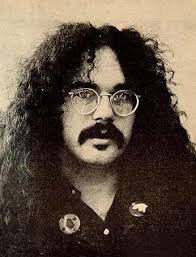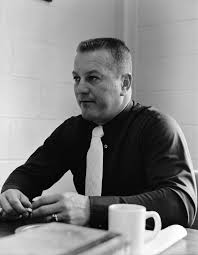In the late Sixties, the place in Detroit to hear the best high energy, heavy metal rock music was the stage of the Grande Ballroom on 8952 Grand River Boulevard.
People of my Boomer generation can only imagine what the ballroom looked like in its heyday of the Thirties and Forties. But in the Sixties, it was all but a run down tenement--the perfect venue for the post apocalyptic brand of music Detroit's angst ridden white males were churning out in those days.
Soon, the word went out to the international rock and roll community that the Grande was the place to play if you wanted to connect with a live audience. Savoy Brown's classic album A Step Further may be the foremost example of that.
Local Detroit blues dynamo Dick Wagner and his band Frost rocked the house for their debut album Rock and Roll Music. Both of these albums preserve the musical madness and delirium that audiences experienced here. The Grande Ballroom was a Detroit icon that became legendary.
The tune Kick Out the Jams by the MC5 (Motor City 5) became the rock anthem for the place. Famous world class rock and roll musicians from London and California showed up and sat in with established and local groups for many one of a kind musical experiences. Some of the performances were filmed in Super 8 and never seen publicly before.
The following link is a trailer for a film documentary on the Grande Ballroom's fabled Rock and Roll era--fifty years in the making.
http://vimeo.com/couchmode/louderthanlove/videos/sort:date/35631404
People of my Boomer generation can only imagine what the ballroom looked like in its heyday of the Thirties and Forties. But in the Sixties, it was all but a run down tenement--the perfect venue for the post apocalyptic brand of music Detroit's angst ridden white males were churning out in those days.
Soon, the word went out to the international rock and roll community that the Grande was the place to play if you wanted to connect with a live audience. Savoy Brown's classic album A Step Further may be the foremost example of that.
Local Detroit blues dynamo Dick Wagner and his band Frost rocked the house for their debut album Rock and Roll Music. Both of these albums preserve the musical madness and delirium that audiences experienced here. The Grande Ballroom was a Detroit icon that became legendary.
The tune Kick Out the Jams by the MC5 (Motor City 5) became the rock anthem for the place. Famous world class rock and roll musicians from London and California showed up and sat in with established and local groups for many one of a kind musical experiences. Some of the performances were filmed in Super 8 and never seen publicly before.
The following link is a trailer for a film documentary on the Grande Ballroom's fabled Rock and Roll era--fifty years in the making.
http://vimeo.com/couchmode/louderthanlove/videos/sort:date/35631404








